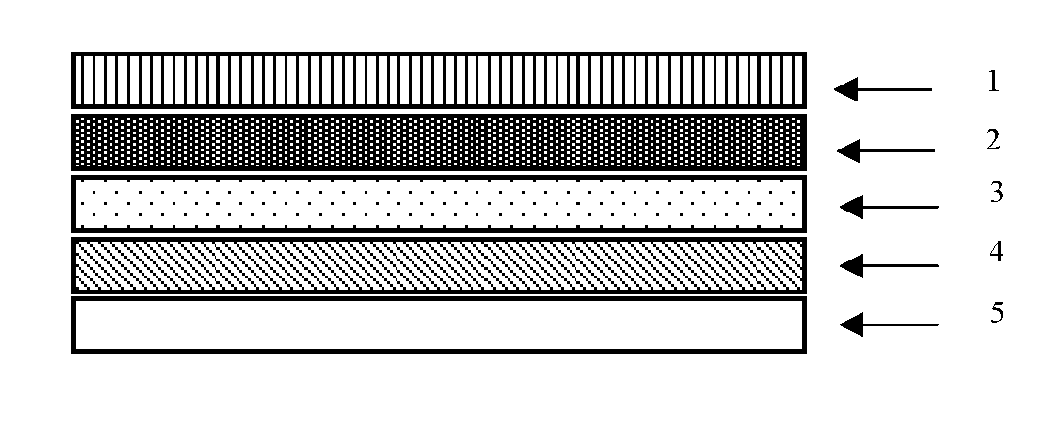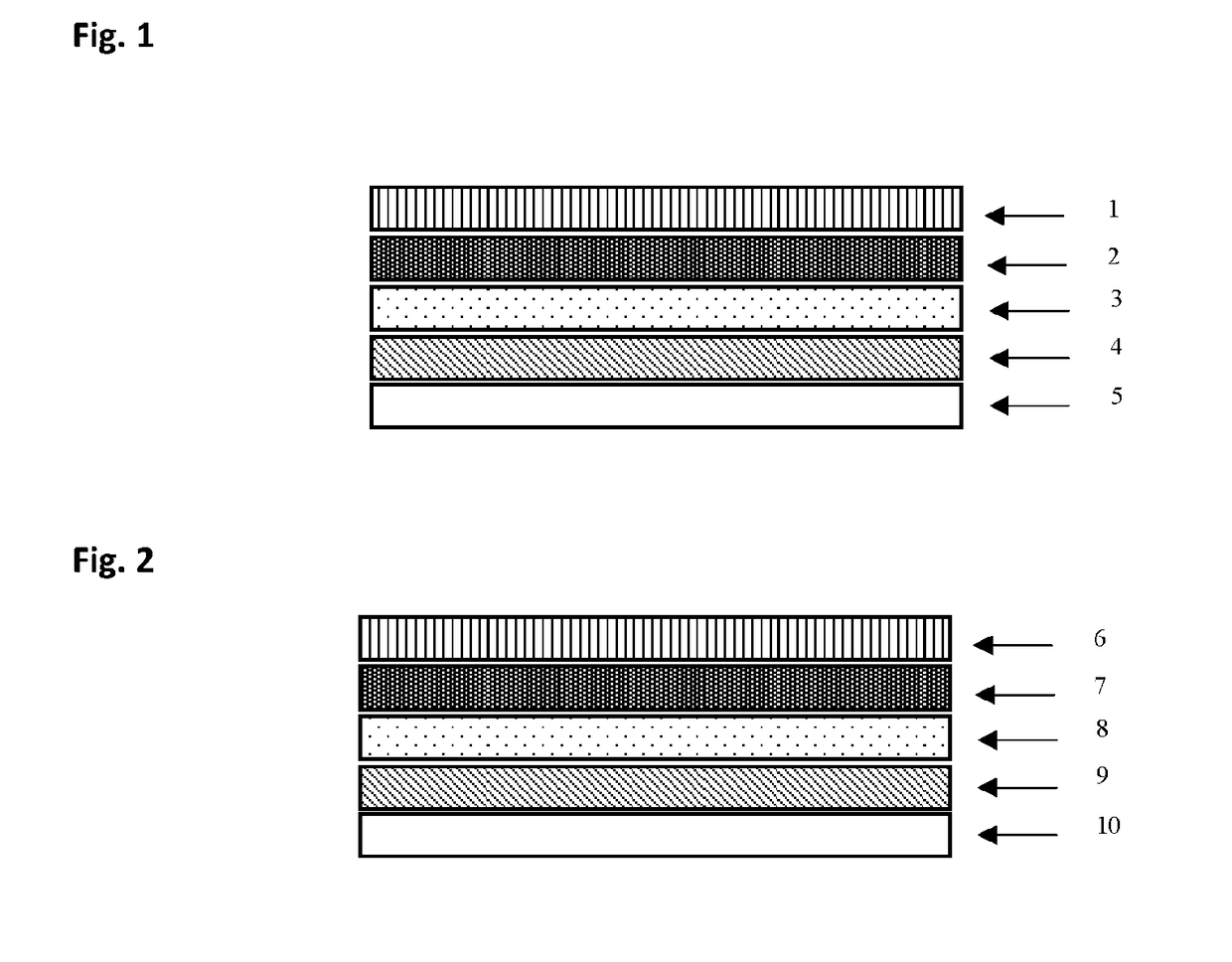Printable Functional Materials For Plastic Electronics Applications
a functional material and plastic electronics technology, applied in the field of printing formulations, can solve the problems of high cost high thickness of screen printing meh-ppv film, and inability to meet the requirements of large-scale device manufacturing, etc., and achieve the effect of low cost device manufacturing at large-scal
- Summary
- Abstract
- Description
- Claims
- Application Information
AI Technical Summary
Benefits of technology
Problems solved by technology
Method used
Image
Examples
example 1
[0044]FIG. 1 shows the device architecture of an OLED that was fabricated on a 2″×2″ sheet of ITO coated PET (150Ω / □) which was cleaned thoroughly using isopropyl alcohol. A hole transport layer (HTL) was then screen printed onto the clean ITO substrate followed by its drying at 120° C. for 15 minutes. A conductive polymer such as PEDOT: PSS was used as a HTL in this case. The emissive layer was made of PFO which was blended with a 2.5 wt % ethyl cellulose dispersion in mesitylene. The amount of PFO in this nanocomposite blend was approximately 1.6% by weight. This nanocomposite blend of PFO and ethyl cellulose was then screen printed onto the HTL coated ITO-PET substrate followed by its curing at 120° C. for 10 minutes. Finally, a cathode material containing 33 wt % Mg and 33 wt % Ag was deposited on the top the PFO based active layer using screen printing technique. The cathode material deposited in this case normally takes 10 minutes to sinter at 120° C.
example 2
[0045]The same approach as described in Example 1 was used to manufacture a fully screen printable organic solar cell (FIG. 2) on a 1″×1″ flexible substrate based on ITO coated PET (60Ω / □). The substrate was first cleaned using isopropyl alcohol followed by deposition of a thin layer of PEDOT: PSS using screen printing technique. The PEDOT: PSS layer was then annealed at 120° C. for 15 minutes prior to screen printing the P3HT: PCBM / ethyl cellulose based active layer on top. The active layer was also annealed at 120° C. for 15 minutes followed by screen printing the Mg / Ag cathode as a back contact.
PUM
| Property | Measurement | Unit |
|---|---|---|
| pressure | aaaaa | aaaaa |
| pressure | aaaaa | aaaaa |
| pressure | aaaaa | aaaaa |
Abstract
Description
Claims
Application Information
 Login to View More
Login to View More - R&D
- Intellectual Property
- Life Sciences
- Materials
- Tech Scout
- Unparalleled Data Quality
- Higher Quality Content
- 60% Fewer Hallucinations
Browse by: Latest US Patents, China's latest patents, Technical Efficacy Thesaurus, Application Domain, Technology Topic, Popular Technical Reports.
© 2025 PatSnap. All rights reserved.Legal|Privacy policy|Modern Slavery Act Transparency Statement|Sitemap|About US| Contact US: help@patsnap.com


